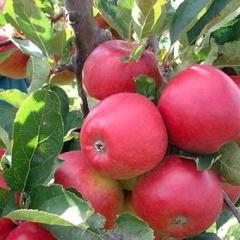How to determine the case of an adjective?
- Blue sky. Exs. has a nominative. case (what?). So the adjective is also in this case.
- Sad at times (what?). Instrumental.
- Enjoy the yellow sun (what?). Dative.
- He brought good news (who what?). Accusative.
- I came to thank my best friend (who what?). Genitive.
- To regret the money spent (about what?) Prepositional.
The case of an adjective is more difficult to determine than the case of a noun.
To do this, it is worth determining the case of a noun that is directly related to an adjective, for example stormy river -nominative case.
Rather, you can figure out the cases of adjectives with the help of such a table, where the questions of each case are indicated with examples.
the case of the adjective is the same as the case of the noun about the sign of which it is said, for example: fresh fruit is masculine in both the noun and the adjective,
interesting movie - here is neuter, good weather - feminine
Determining the cases of adjectives is as easy as shelling pears. To do this, it will be enough just to make up a phrase with any noun, and then already determine the case of this very noun. For example, a large table (which one?), A noun in the nominative case:

If it's hard right away, attach the adjective to the noun. Then it will be much easier to persuade. For instance:
Blue sky
Blue sky
Blue sky
Blue sky
Blue sky
About the blue sky.
The case of an adjective is determined by the case of a pronoun or a noun, the attribute of which it denotes and with which it agrees. For example, About the blue sea. Here the noun sea stands in the prepositional case. Hence, the adjective blue also in the prepositional case.
It is not so difficult to learn to determine the cases of imn adjectives if nouns are also found with these adjectives. And if there are no such nouns, then you need to substitute them hypothetically.
As you know, an adjective denotes a certain attribute of an object (an object is the noun that we talked about above). The cases of the noun and the adjective coincide in the overwhelming majority of variants. For example: blue sky (Dative), about a good boy (Prepositional), paper documentation (Creative), spring thoughts (Nominative or accusative).
When we learn to see or represent these phrases, it will be as easy to determine the case of an adjective as it is for a noun. At the end, which indicates the case. Or on a question that can be asked about this adjective.
An adjective is a part of speech that denotes a feature of an object and is consistent in gender, number and case with the noun on which it depends.
Thus, to determine the case of an adjective, it is sufficient to determine the case of a noun.
Example: I see a beautiful (V. p.) Girl (V. p.). To begin with, we determine the case of the noun: I see (whom?) A girl. The noun is used in the accusative form, so the adjective is also used in the B. case.
Most often, in sentences and phrases, adjectives refer to nouns. And what case these nouns will have, so will adjectives.
For instance:
If there is no noun, then you have to come up with a meaning.
For instance:
slightly interesting. We substitute the word story and determine its case (who what?). Nominative.
To determine the case of an adjective, you need to pay attention to the noun to which this adjective refers - what case this noun will have, so will the adjective.
Example: a steel needle (answers the question what? , which means that this is the instrumental case - for both the noun and the adjective).
Tables with adjective endings are good, but you won't be memorizing it by heart, will you? You need to learn how to independently navigate in such a topic as cases.
Let's take an example:
I want to say goodbye to old things.
We have an adjective - oldquot ;, it describes the sign of the noun things. The adjective is always closely related to the noun, in what form the last is used, in this form the first will also be, in particular, they will have the same case.
That is, you just need to understand in which case our noun is used. By the word things you can pick up the case question what? , which means that it refers to the instrumental case. And the adjective is also used in the instrumental case and has an ending -i.
An adjective means a sign of an object that answers the question: what? What? What? The adjective is declined in the singular.
Husband has the ending oops, oops, oops. For example: a man (what?) Is handsome, loving, cool. Female genus ends in yaya, oops. For example: what skirt? turquoise, burgundy.


